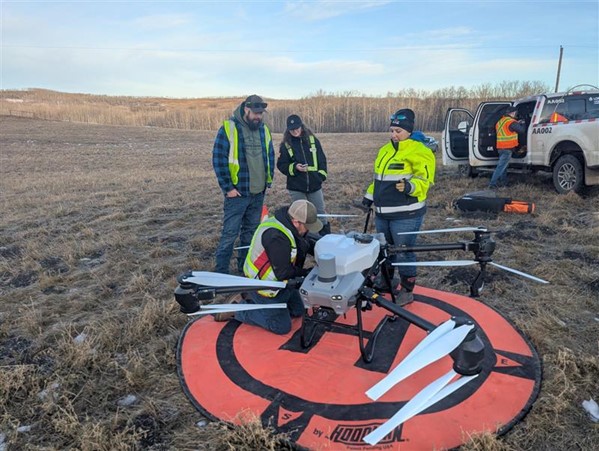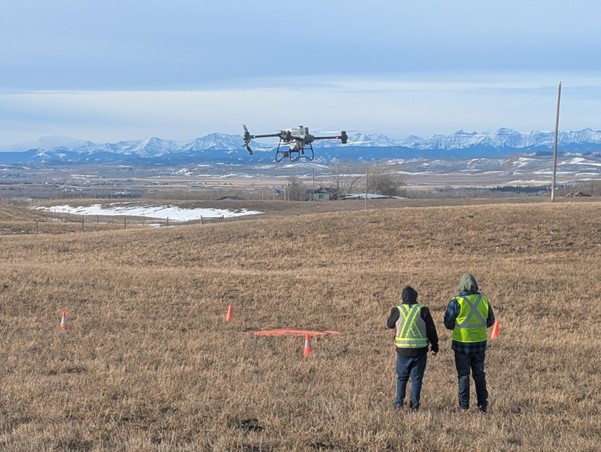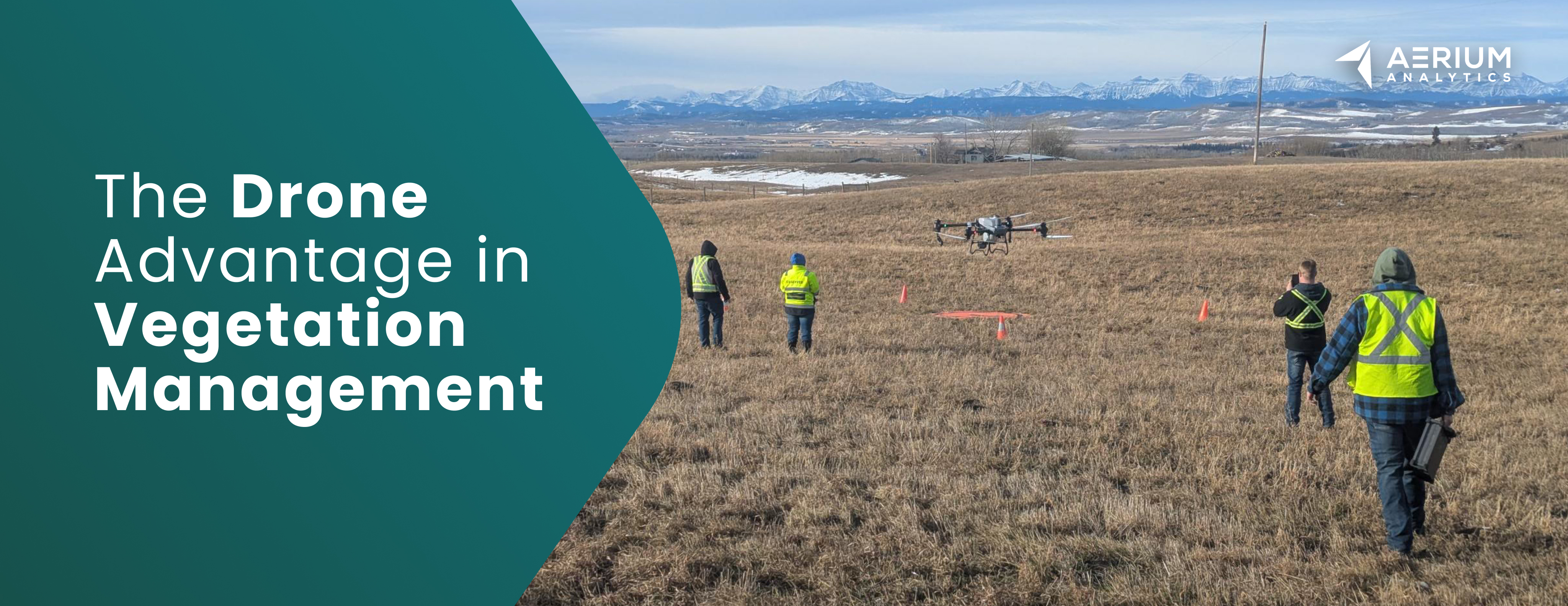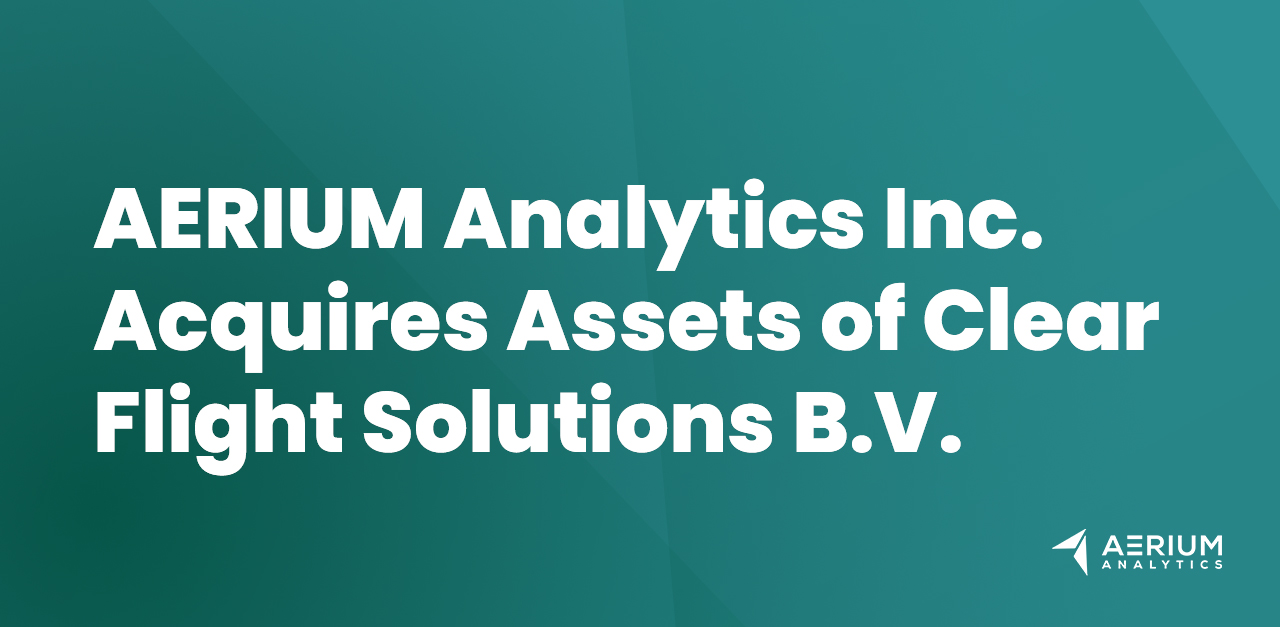
The Drone Advantage in Vegetation Management – Part 1
For decades, vegetation management relied on boots-on-the-ground teams using UTVs, backpack sprayers, and heavy machinery (including helicopters and fixed-wing aircraft). These teams have done essential work, but they’re up against some challenging realities, including:
- Sites that are too remote to access safely or efficiently
- Terrain that’s too steep, wet, or unstable
- Sensitive or machine-free areas that are either environmentally delicate or simply impassable
- Environments where vegetation isn’t just a nuisance, it’s a hazard
From tailings ponds that attract wildlife to infrastructure corridors that require ongoing attention, today’s vegetation management operations are becoming more complex and dynamic. Traditional methods remain essential, but they can benefit from new tools that enhance efficiency and safety.
That’s where drone-based vegetation management offers a valuable complement, helping to approach this work in smarter, faster, and safer ways.

A New Chapter in Vegetation Management
Across industries, from energy to forestry, vegetation management is becoming more than just routine maintenance. It’s now a key part of protecting the environment, safeguarding operations, and ensuring regulatory compliance in a world that’s changing fast.
Overgrowth in utility corridors, invasive species creeping into natural habitats, vegetation choking out access roads and tailings ponds, these are just some of the everyday challenges operations teams face, and those challenges are growing.

For instance, electric utility companies in North America collectively spend approximately $10 billion annually on vegetation management. This expense often represents the largest line item in their operating budgets. It is also required to meet government compliance.
Source: https://www.tdworld.com/vegetation-management/article/21239967/investing-in-the-future-of-the-uvm-industry
In Canada, transmission and pipeline operators regularly list vegetation as one of their top maintenance priorities, especially as seasons grow longer and wetter, increasing plant growth rates. Canadian businesses allocated $27.4 billion to environmental protection in 2022, with a significant portion directed toward resource management activities like vegetation management.
Source: https://www150.statcan.gc.ca/n1/daily-quotidien/250116/dq250116c-eng.htm
How Drones Are Changing the Game for Vegetation Management
Vegetation management isn’t just about trimming back growth, it’s about managing risk, maintaining safety, and staying compliant, especially in industries where small oversights can lead to big consequences.
Drones bring a level of precision and adaptability to the vegetation management space that traditional methods can’t match. With the right certifications and tools, they make it possible to:
- Reach hard-to-access or dangerous zones without putting people at risk
- Use mapping and data to target pesticide applications exactly where they’re needed
- Cover large areas quickly, while reducing environmental impact and pesticide usage
- Operate in sensitive ecosystems with minimal disruption
And as regulations evolve, so do the opportunities.
“Integrating drones into vegetation management allows us to gather better data, target applications with greater precision, and minimize environmental impact while still getting the work done. It’s exciting to see how quickly the technology is advancing, and we’re proud to be at the forefront of driving smarter, safer solutions across the energy, mining, and forestry sectors.”
— Nathan Cicoria, Chief Operations Officer at AERIUM Analytics
Here are some of the key advantages of a drone-based vegetation management operation:
✅ Enhanced Safety in Challenging Environments
- Significantly reduces the need for personnel to enter high-risk zones, minimizing exposure to hazardous chemicals and treacherous terrain.
- Ideal for areas that are difficult—or impossible—to access with traditional equipment like UTVs or boom sprayers, such as steep slopes, tailings ponds, or dense deadfall.
- Operators can conduct precise applications from a safe distance, replacing the need for costly and broad-scope alternatives like helicopters.
- Helps mitigate tripping hazards and other physical risks common in forestry, mining, and energy sites where manual access is unsafe or impractical.
✅ Efficiency Gains
- Rapid coverage of large or remote areas
- Targeted spraying using prescription mapping and release
- Automated reporting for compliance assurance
✅ Environmental Responsibility
- Less herbicide, applied with greater precision and avoidance of sensitive areas
- Limited ground travel, reducing potential for disturbance
- Reduced wildlife attractants near critical infrastructure and hazardous areas
✅ Compliance and Regulation
- Certified Applicators ensure clients meet or exceed the new provincial standards for aerial herbicide application
- Ongoing research supports future approvals for more herbicide types and approved application methodologies
As mentioned earlier, Courtney Cicoria, our Environmental Field Operations Coordinator, recently became the first person in Alberta to earn the RPAS Herbicide Applicator Certificate. This accomplishment not only highlights Courtney’s dedication and expertise but also marks a significant moment for the industry in Alberta.
AERIUM Analytics Inc. is officially the first company in Alberta to receive RPAS Service Registration. We are certified to operate in Alberta and are working with Health Canada and PMRA to obtain official labels and broader regulatory approval for herbicide application by drone. We currently operate under one Research Authorization and are pursuing three more for the 2025 season to collect essential data for future certification.
In the next chapter of this series, we’ll take you deeper on this groundbreaking journey and share more about what it means for the future of sustainable vegetation management in Canada.

